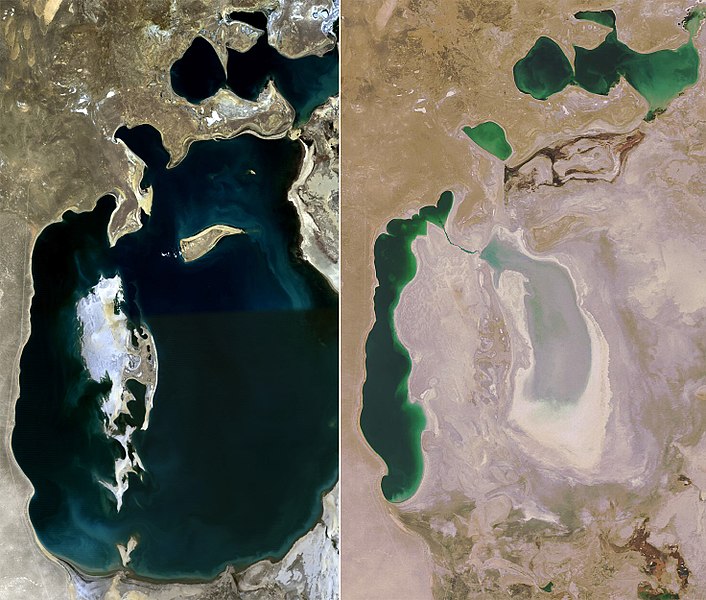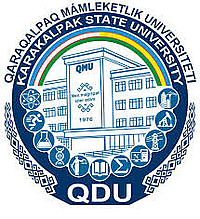An Environmental Disaster
The desiccation of the Ara Sea is a monumental blow to nature, caused by man and an unhinged use of water resources in Central Asia. The Swedish Aral Sea Society aims at spreading information on one of the largest environmental disasters in the world.
 The Aral Sea in 1989 (left) and in 2008 (right). Satellite photo: NASA.
The Aral Sea in 1989 (left) and in 2008 (right). Satellite photo: NASA.
Until the 1960s, the Aral Sea was one of the largest lakes on our planet. It is located in western Central Asia, between Kazakhstan and Uzbekistan, and has a long history. 50 years ago, the Aral Sea was the fourth-largest lake on earth, 12 times the size of Lake Vänern. Since then, more than half of the lake's surface and more than two-thirds of its water have disappeared, leaving mile upon mile of desiccated, salt-laden lake bed. This is because large-scale cotton cultivation with huge irrigation facilities was forced upon the Soviet Union to become self-sufficient in cotton. The water was taken from the two rivers that flow into the Aral Sea, where originally 1/3 of the water came from the Syr Darya River and 2/3 from the Amu Darya. Through the systematic diversion of the rivers' water to extremely inefficient irrigation facilities, the Aral Sea lost almost its entire water supply (98%). This led to the rapid drying up of the Aral Sea.
Today, the lake is divided into five smaller lakes. Only the northernmost "Little Aral Sea" now receives water and can once again produce fish. The other lakes have such a high salt content that they cannot contain any life. The situation for the people and animal species that live around the former Aral Sea beaches is getting worse. The five lakes continue to dry up. Many of us have seen the strange and terrifying images of large fishing boats stranded and left in a vast sand desert. The human tragedies that follow in the wake of the disaster have not been shown as clearly. Unemployment, poverty and disease have taken over the once prosperous coastal landscapes. Large amounts of dried salt, fertilizers and pesticides that have accumulated over several decades are today spread with the wind and have thus poisoned the soil, air and groundwater. Fishing has disappeared, factories have closed down, schools and healthcare have been impoverished.
We do not yet know the full extent of the damage to ecosystems or the effects they have had on food, drinking water and the spread of disease, which follows in the wake of poverty and environmental destruction. Women and children are hit hardest. Child mortality is among the highest in the entire former Soviet Union. Few children today are born completely healthy and well-formed. Virtually all young children are anaemic. Anaemia is also common in pregnant women and therefore births are often complicated.
The drying up of the Aral Sea is one of our times' bitterest killing blows against nature, caused by man himself. It shows painfully clearly the consequences of short-term attempts to exploit nature for economic gain. The decisions that led to the disaster must be replaced by decisions that return the inhabitants of the Aral Sea region to their health and opportunities to once again support themselves from the once productive ecosystems.



